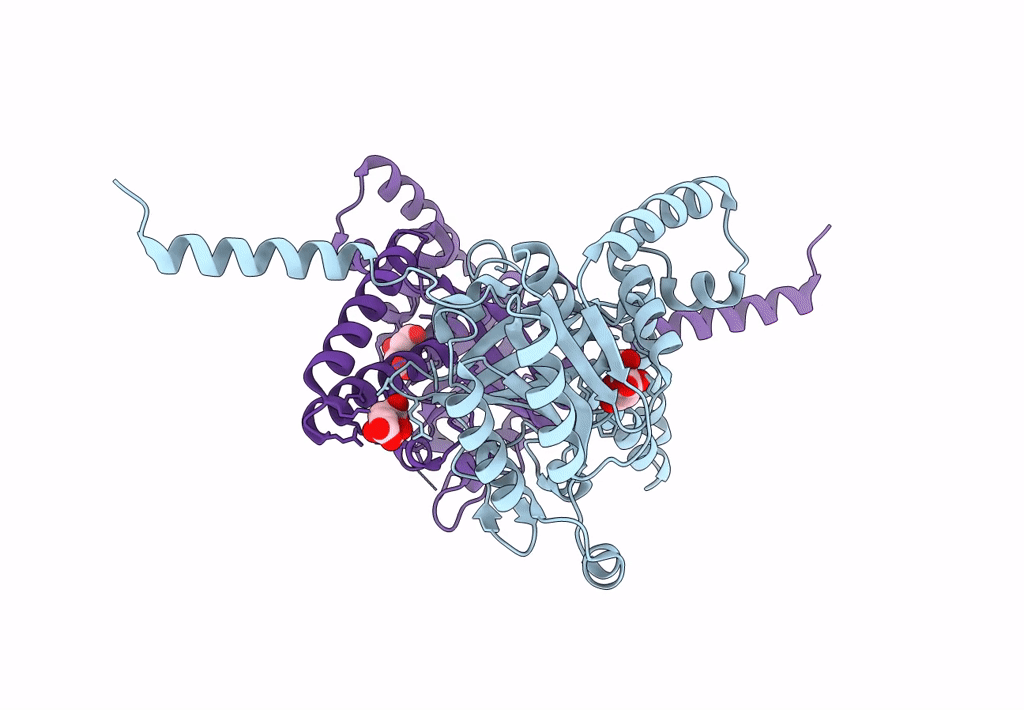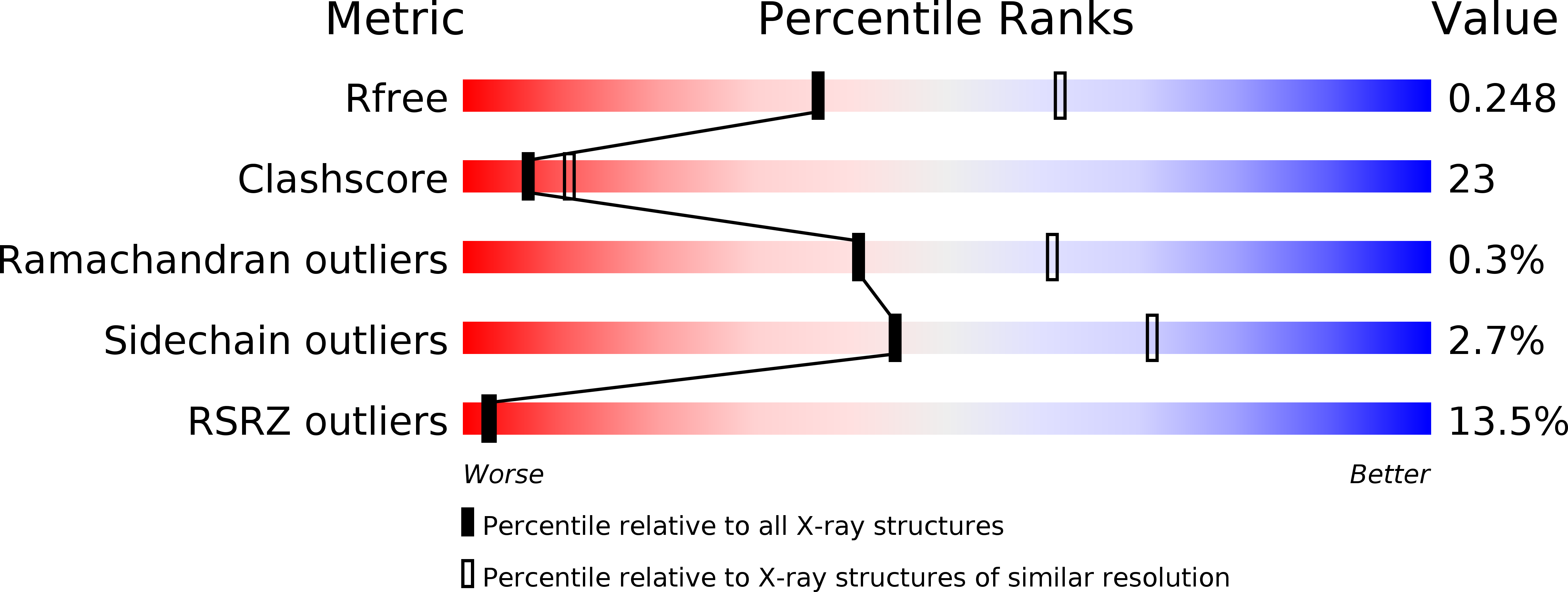
Deposition Date
2011-09-14
Release Date
2012-03-21
Last Version Date
2024-05-08
Entry Detail
PDB ID:
4A1F
Keywords:
Title:
Crystal structure of C-terminal domain of Helicobacter pylori DnaB Helicase
Biological Source:
Source Organism:
HELICOBACTER PYLORI (Taxon ID: 210)
Host Organism:
Method Details:
Experimental Method:
Resolution:
2.50 Å
R-Value Free:
0.25
R-Value Work:
0.21
R-Value Observed:
0.21
Space Group:
P 21 21 2


